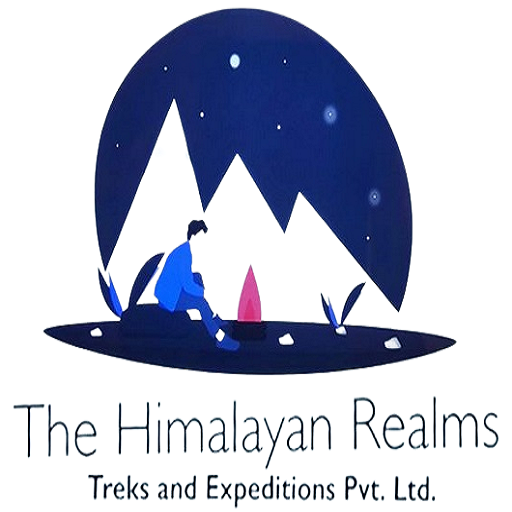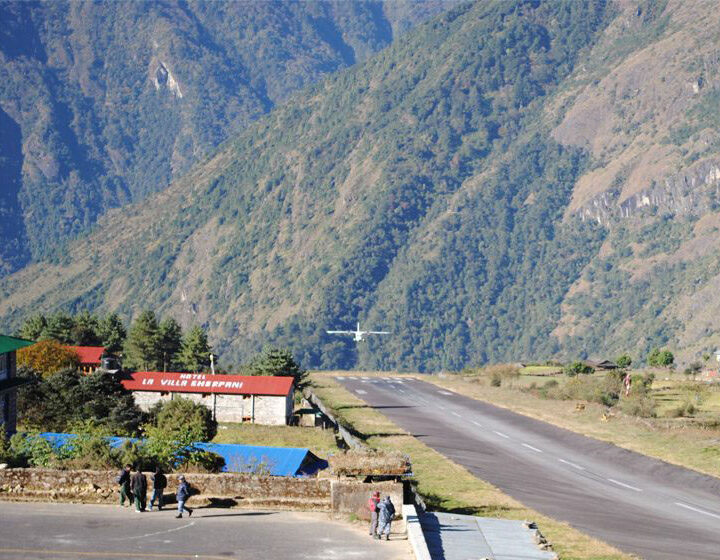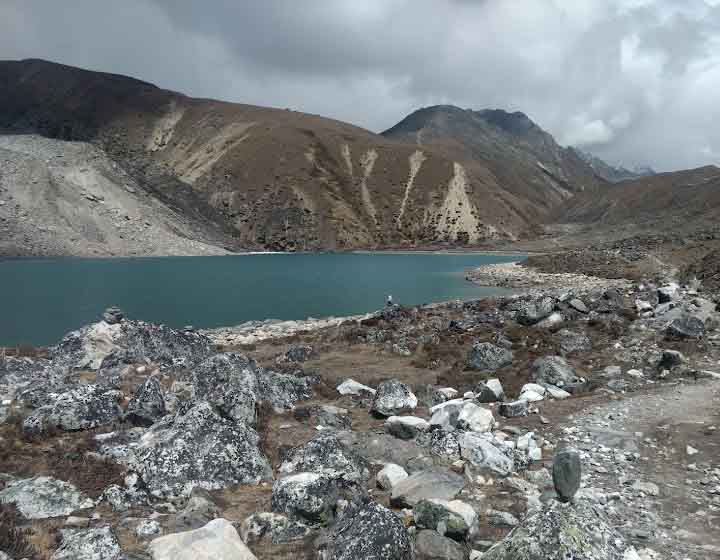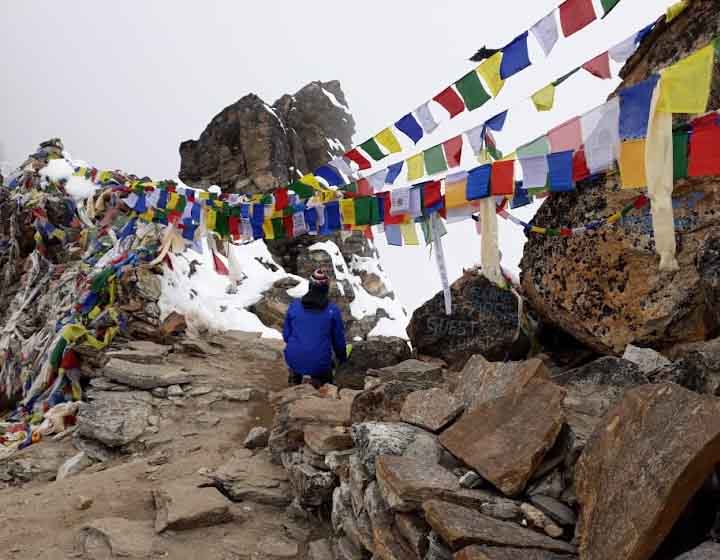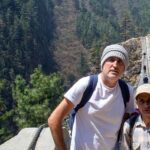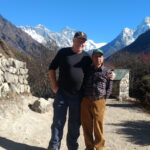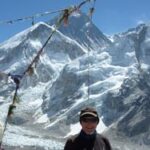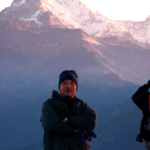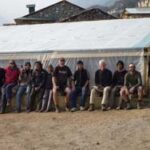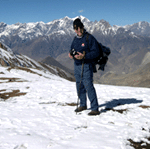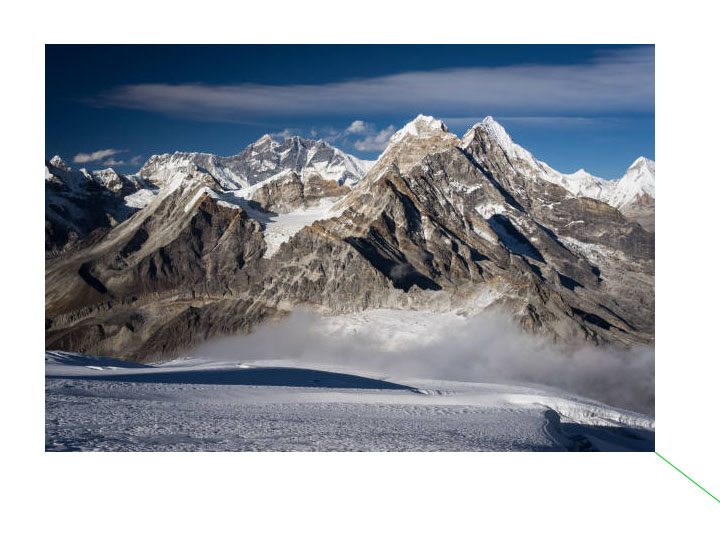
Trip overview
Overview: Mera Peak 14-day climbing
Mera Peak Climbing and trekking is one of the most impressive trekking peaks and holds the highest trekking peak status among those over 6,000 meters. This adventure leads into absolute isolation and untouched wilderness, far from villages and human settlements. It is a remarkable journey through the wildest part of the Hinku Valley in the eastern Khumbu region, located just southeast of the world’s highest mountain, Mt. Everest. The trek offers stunning scenery—lush hills, remote valleys, and majestic snowcapped peaks.
A High-Altitude Adventure with Moderate Technical Demands
Mera Peak stands at 6,461 meters and is Nepal’s highest trekking peak, graded PD (Peu Difficile) in the Swiss/French Alpine System. While less technical than other summits, climbers must cross glaciers and navigate icy terrain, making it a challenging and thrilling ascent. The trail follows a glacier route and cuts through the hidden Hinku Gorge—a breathtaking, less-traveled part of the Khumbu and Everest regions.
Diverse Landscapes, Rich Forests, and High-Altitude Acclimatization
The Hinku Gorge features vibrant vegetation and rich biodiversity, with forests of magnolia, rhododendron, birch, and pine trees. As trekkers ascend, the green forests slowly fade into alpine terrain and glacial wilderness. Climbers typically rest and acclimatize at Mera Base Camp (5,300m) before moving to Mera High Camp (5,780m) to prepare for the final summit attempt.
Summit Success and Himalayan Panorama
Although Mera Peak is accessible to fit trekkers with basic climbing skills, the summit push requires determination and support. Our experienced climbing guides ensure your safety by fixing ropes and securing the route when necessary. From the summit, climbers are rewarded with a panoramic view of five of the world’s highest mountains—including Everest, Lhotse, Makalu, and Kanchenjunga—making the effort truly worthwhile.
Mera Peak climbing and trekking is a magnificent adventure that begins and ends with a sweeping scenic short flight to and from Lukla town, the gateway to Everest and to other wonderful areas of Khumbu. The walk leads through high passes, tranquil forests, summer pastures, and towards moraines and glacial lakes. After an adventurous climb to Mera Peak, the return journey is on the same route back to Lukla, from here concluding this awesome adventure with a scenic short flight back to Kathmandu. After completing this fascinating journey to Mera Peak trek and climb with Unique Holidays’ excellent services and caring,.
Lifestyle and Culture
The Sherpa people live in the Mera Peak region and are recognized for their resilience, friendly hospitality, and Buddhist traditions. The journey will take you through traditional Sherpa communities with stone dwellings and prayer flags.
Ancient Buddhist monasteries, chortens, and mani walls.
Locals live a basic existence based on yak herding and agriculture.
The spiritual rituals and festivals reflect the influence of Tibetan Buddhism.
Vegetation and atmosphere
From Lush Forests to Alpine Meadows
The 14-day Mera Peak Trek offers not only an exciting climbing experience but also a remarkable journey through Nepal’s rich ecological zones and ever-changing mountain atmosphere. Starting from the lower altitudes of the Hinku Valley and ascending to the icy heights of Mera Peak (6,476m), trekkers witness a stunning transformation in both vegetation and climate.
The trek begins with a flight to Lukla and a hike through lush, green forests. In the lower regions—especially around Chutanga and the early parts of the trail—the vegetation is rich and varied. You’ll pass through dense rhododendron, pine, and oak forests. These temperate woodlands are home to colorful birds, moss-covered trees, and occasional glimpses of Himalayan wildlife such as musk deer and Himalayan tahr.
As we ascend higher toward Zatrwa La Pass (4,600m), the landscape begins to change. Trees thin out and give way to alpine shrubs and grasses. The trail becomes more open, offering sweeping views of snowcapped peaks and rugged cliffs. Here, dwarf junipers, hardy alpine plants, and yak pastures dominate the terrain. The crisp, cool air starts to feel thinner, and the clouds seem to float just above your head.
Into the Glacier Zone: The High Himalayas
Descending into the Hinku Valley, we follow the river through meadows and scattered forest. Khote, Tangnag, and Khare—remote Sherpa settlements along the trail—sit among barren yet beautiful alpine surroundings. The atmosphere becomes more peaceful and isolated as we leave behind the more developed regions near Lukla. By this stage, vegetation is sparse, but the natural beauty is raw and pristine. Glacial streams, scree slopes, and rugged cliffs shape the landscape.
From Khare onward, the climb to Mera Peak Base Camp and High Camp leads us into an arctic environment. Vegetation disappears entirely, replaced by snow, ice, and rocky outcrops. The high-altitude air is cold and dry, with strong winds common, especially in the afternoon. Nights are freezing, and even during the day, the sun can be harsh at this elevation. However, the atmosphere here is otherworldly—quiet, stark, and humbling.
Summit day begins early, usually before dawn, under a vast starlit sky. The glacial environment is pure and still, and the silence is broken only by the crunch of crampons on ice. Reaching the summit of Mera Peak, climbers are rewarded with one of the best panoramic views in Nepal—Everest, Lhotse, Makalu, Cho Oyu, and Kanchenjunga are all visible in a single sweep.
The entire trek, from lush forest to icy summit, reveals the full spectrum of Himalayan ecosystems. The clean mountain air, changing temperatures, and untouched natural beauty make the Mera Peak Trek not just a climb but a journey through Nepal’s living landscape.
Vegetation Zones:
The Mera Peak trail spans a remarkable range of vegetation zones shaped by elevation and climate. Starting in the Lower Montane Zone (below 2,500 m), trekkers pass through dense forests of sal, pine, and broadleaf species. This area is rich in subtropical flora, including bamboo and ferns.
Sub-Alpine Zone (2,500 m–4,000 m)
The sub-alpine zone of the Mera Peak climbing route lies between 2,500 m and 4,000 m, offering a scenic transition from dense forests to open alpine meadows. As trekkers ascend through this zone, they encounter lush rhododendron, oak, and pine forests that gradually thin out with elevation. Villages like Paiya and Panggom reflect the traditional Himalayan lifestyle, with stone houses, terraced farms, and friendly locals. This zone is rich in biodiversity—home to Himalayan thars, musk deer, and colorful bird species. The trail offers breathtaking views of cascading rivers, suspension bridges, and distant snow-capped peaks. The fresh mountain air and peaceful natural surroundings create an ideal acclimatization environment before reaching higher altitudes. As you move closer to 4,000 m, the forest gives way to juniper shrubs and pasturelands, marking the beginning of the alpine wilderness that lies ahead. This region blends natural beauty with cultural charm, making it a memorable part of the journey.
Alpine Zone (3,000–5,000 m)
The Alpine Zone on the Mera Peak climbing route spans from 3,000 to 5,000 meters, showcasing dramatic landscapes and harsher environmental conditions. As trekkers rise above the tree line, forests give way to vast alpine meadows, rocky ridges, and glacial streams. Settlements are sparse, with seasonal herder huts and isolated teahouses like those at Khote and Thangnak serving as vital stopovers. Vegetation becomes minimal—dominated by hardy grasses, mosses, and dwarf shrubs adapted to cold, dry climates. The terrain is rugged yet stunning, with panoramic views of towering peaks such as Mera Peak, Kusum Kanguru, and Charpate Himal. Wildlife sightings may include snow pigeons, Himalayan monals, and blue sheep. The thin air and falling temperatures demand careful acclimatization. Glacial moraines and high-altitude lakes add to the raw, untouched beauty of this zone. This part of the trail prepares climbers physically and mentally for the challenges of the glaciated zone beyond 5,000 meters.
Glacial and Snowline Zone (5,000 m) Above 5,000m, vegetation is almost nonexistent. The terrain is dominated by glaciers, moraines, and barren rocks. Only microscopic plant life like algae and lichens survives in these harsh conditions.
Atmosphere and Climate:
The atmosphere and climate along the Mera Peak route change dramatically with altitude. Each zone offers a distinct experience.
In the lower regions (sub-Alpine Zone), the air is rich in oxygen. The climate is mild and temperate. Daytime temperatures range from 10°C to 20°C during spring and autumn.
As climbers ascend into the Alpine Zone, the air grows thinner and cooler. Night temperatures often fall below freezing, even in peak trekking seasons. Wind speed increases, and UV radiation becomes stronger due to the thinner atmosphere.
Above 5,000 meters in the Nival Zone, the climate is harsh and unpredictable. Oxygen levels drop to around 50% of sea level. Breathing becomes more difficult. Temperatures can fall to -20°C or lower, especially near Mera High Camp and the summit. Snowfall, strong winds, and sudden storms are common.
Despite the extremes, clear skies and stable weather often occur in April–May and September–November, offering ideal climbing windows.
Conclusion Mera Peak trekking
Mera Peak Trekking offers an unforgettable blend of remote wilderness, rich biodiversity, and high-altitude adventure. With panoramic Himalayan views and a moderately challenging climb, it’s perfect for fit trekkers seeking both solitude and summit glory. This journey through the heart of the Hinku Valley delivers not just a peak but a profound Himalayan experience.
Short Itinerary
Day 1: Arrival in Kathmandu (1,350m), trek preparation.
Day 2: Fly to Lukla (2,860m) & trek to Paiya (2,730m).
Day 3: Trek to Panggom (2,846m).
Day 4: Trek to Ningsow (2,863m).
Day 5: Trek to Chhatra Khola (3,150m).
Day 6: Trek to Kothe (3,600m).
Day 7: Trek to Thaknak (4,350m).
Day 8: Trek to Khare (5,045 m)—Acclimatization Day.
Day 9: Climb to Mera Base Camp (5,300m).
Day 10: Trek to High Camp (5,780m).
Day 11: Summit Mera Peak (6,476m) & return to Khare.
Day 12: Trek to Kothe.
Day 13: Trek to Thuli Kharka (4,300m).
Day 14: Trek to Lukla & fly back to Kathmandu.
Itinerary
We can catch an early morning flight from Kathmandu to Lukla and begin our trek to Paiya after landing at the Tenzing-Hillary airport in Lukla. We walk on a jungle trail, cross a bridge over the Handi Khola and reach Surke Village. From here we continue moving south and cross the Chutok La pass before reaching the small settlement of Paiyan, also known as Chutok. Stay overnight Paiya.
Day 04: Paiya to Panggom (2,846m/9,337ft): 5-6 hours:-We descend for a while and reach a small bridge. From here the trail is slippery until we cross the Kari La pass. We walk through rhododendron and bamboo forests on a narrow mountain trail. On today’s trip we also get to be in awe of the Dudhkoshi Valley. We continue our trek to Panggom Village whose settlers are dependent on farming and trading. Stay overnight in Panggom.
Panggom to Ningsow (2,863m/9,393ft): 4-5 hours:-We begin our trek after breakfast. After trekking out of Panggom, we cross the Panggom La pass. Then we ascend, walk on a steady path and turn north. We cross Peseng Kharka Khola first then after walking for some time, reach Peeng Kharka Danda. We cross Ningsow Khola (stream) before reaching the Ningsow Village. Stay overnight in Ningsow.
From Ningsow, we climb first then descend for a while and climb some more to reach Ramailo Danda. From here we get extraordinary views of Mera Peak and Salpa. After ascending and descending on our trail, we enter the Makalu Barun National Park. Our trail from here to Chhatra Khola is called Pasang Lhamu trail. On the way, if we are lucky, we might even come across the elusive Red Panda. Stay overnight in Chhatra Khola.
Chhatra Khola to Kothe (3,691m/12,109ft): 6-7 hours:-We walk towards the north on the main trail to Mera Peak. After walking on a trail next to the the Majang Khola, we merge with another trail which moves alongside the Hinku Khola. Our trail moves straight ahead towards Tashing Ongma which has seasonal tea shops. We continue our trek and cross the bridge over the Sanu Khola before us reaching Kothe. Stay overnight in Kothe.
Kothe to Thaknak (4,358m/14,297ft): 3-4 hours:-We trek along the ridge of the Hinku Khola in the shadow of Mera Peak. We take lunch at Gondishung, the summer herders’ settlement in the west bank of the Hinku Drangka. Beyond Gondishung, we pass a 200-year-old Lungsumgba Gompa where we can find Mera Peak scripted in rock along with its route to reach Mera. A short walk takes us to Thaknak, which is a summer grazing area with primitive lodges and shops. Stay overnight in Thaknak.
Thaknak to Khare (5,045m/16,486ft): 2-3 hours:-Leaving Thaknak, we follow the lateral moraine of Dig Glacier to Dig Kharka, which offers spectacular views of Charpate Himal. The trail climbs through moraines to the snout of the Hinku Nup and Shar glaciers, and then climbs more steeply to Khare. From here, we can see the northern face of Mera Peak which will be an amazing experience. After lunch we can hike in and around Khare. Stay overnight at Khare.
Khare: Acclimatization and pre–climb training:-We have a separate day set aside solely for acclimatization and basic training just to prepare ourselves better for the Mera Peak climb. Our climbing leader will help us polish our basic climbing techniques and demonstrate the best ways to use our climbing gears like the ice axe, harness, ascender climbing boots and crampons. The training will also include learning the best climbing technique with the rope. Stay overnight in Khare.
Khare to Mera High Camp (5,780m/18,958ft): 6-7 hours:-We walk through a boulder-strewn course on a steep trail to reach the Mera Peak Base Camp. From here, we continue further through the Mera La pass to reach the Mera High Camp. Our path is along a rocky trail, which can be hazardous if it has recently snowed, as there are a number of crevasses here. We make our way to the top of the rock band, which is marked by a large cairn. Then we set up a high camp while enjoying excellent views of Mt. Everest, Makalu, Cho Oyu, the south face of Lhotse, Nuptse, Chamlang and Baruntset Mera High Stay overnight at Camp in the camp.
This is a really important day for the expedition. We wake up around 2 in the morning for breakfast. It’s going to be very cold in the beginning but soon we warm up as we continue up the glacier and onto a peculiar ridge. The first rays of the sun hit the big peaks in an amazing red glow. The route is still non-technical as we slowly climb higher into the ever-thinning air. The slope steepens for a section behind the ridge and the summit comes back into view. At the foot of the final steep summit cone, we may use a fixed rope if the climbing leader believes it’s required. The summit is only a few meters away. From the summit, we take in spectacular views of the mighty Himalayas including Mt. Everest (8,848m), Cho-Oyu (8,210m), Lhotse (8,516m), Makalu (8,463m), Kangchenjunga (8,586m), Nuptse (7,855m), Chamlang (7,319m), Baruntse (7 ,129m) and others. Later, we retrace our steps back to the high camp where we rest for a while before descending to Khare. Stay overnight in Khare.
Reserve Day for Contingency:-There is no guarantee that we will have favorable weather on our planned day for the summit. Therefore, this day is set aside as a contingency in case we are unable to summit the Mera on the desired day due to bad weather conditions or any other unanticipated reason. However, if the trip goes smoothly, this day will not be required.
Khare to Kothe (3600m/11808ft): 4-5 hours:-We trek from Khare to Kothe along the same trail used previously. After reaching Kothe, we celebrate our success by trying out local delicacies and wines. Stay overnight in Kothe.
Day 15: Kothe to Thuli Kharka (4,300 m/14,107ft): 5-6 hours:-We begin our trek to Thuli Kharka after breakfast. We climb up and descend, cross several tributaries of the Inkhu Khola before reaching a forked trail nearby Taktho. We choose the trail on our right and continue walking. Our trail passes by a Chorten after which we walk downhill on a steep trail. Next, we ascend to Thuli Kharka and pass by another Chorten on the way. Stay overnight in Thuli Kharka.
Thuli Kharla to Lukla via Zatrwa La pass: 6-7 hours:-We cross the Zatrwa-La pass at 4,600. As soon as we cross the pass, we are welcomed by the sight of the beautiful Lukla Valley which is surrounded by Cho Oyu, Kongde Peak, Numbur Himal, Kusum Khangru and other Himalayan peaks. From Zatrwa La pass we walk all the way down to Chutang and then straight forward to the Lukla village. In the evening we enjoy dinner in the Himalayas of Nepal with our crew. Stay overnight in Lukla.
Fly to Kathmandu:-We catch an early morning flight to Kathmandu. After reaching Kathmandu, we can take a rest or do some souvenir shopping. If we want to explore any other areas of Kathmandu, we may do that today. Our guides can help you with both souvenirs shopping or sightseeing. There will be a farewell dinner in the evening to celebrate the climbers’ successful summit of the Mera Peak. Stay overnight in Kathmandu.
Final departure transfer from Hotel to international airport
Included
- All airport, hotel airport transfers
- 2 night accommodation in Kathmandu with B/B basic plan
- Round trips flight ticket for Gudest , guide and some staff.
- National Park permit
- Mera peak climbing permit.
- Khumbu village parmit
- Garbage deposit charge
- Accommodation in the tea house,food, Tea/coffee during trek
- Guide:- including salary, insurance, equipment, flight, food and lodging
- Climbing guide charge and equipment fees.
- Porter:- including salary, insurance, equipment, food and lodging
- For guest:-Down jacket, Good sleeping bag (down jacket and sleeping bag are to be returned after trip completion)
- All government and local taxes
Not Included
- Food in Kathmandu ( Lunch & Dinner)
- Bakery food during the trek
- Nepal Visa fee
- International airfare from your country to Kathmandu and from Kathmandu
- Extra night accommodation in Kathmandu
- Travel and rescue insurance if guest get mountain sickness and need to rescue helicopter.
- Personal expenses example (phone calls, laundry service , bar bills, battery recharge, extra porters, bottle or boiled water, shower etc)
- Tips for guide and porters
Useful Info
Duration: 14 days
Max Elevation: 6,476m (Mera Peak summit)
Grade: Strenuous
Trek Type: Teahouse + Camping at high altitudes
Best Seasons: Spring (March-May) & Autumn (September-November)
Permit Required: NMA Climbing Permit, Makalu Barun National Park Entry Permit, and Khumbu Pasang Lhamu Rural Municipality Permit
Physical Fitness: Requires high endurance and prior trekking experience above 4,000m.
Technical Skills: Basic ice axe & crampon skills, but no prior mountaineering experience needed.
Acclimatization: Essential due to high altitude—spend extra days for adaptation.
Equipment Checklist
Clothing: Down jacket, thermal layers, waterproof shell, gloves, and gaiters
Climbing Gear: Ice axe, crampons, harness, helmet, jumar, and ropes
Footwear: High-altitude mountaineering boots
Sleeping Bag: -20°C rating recommended
Best Time to Trek Spring (March-May): Stable weather, clear skies, and warmer temperatures
Autumn (Sept-Nov): Best visibility and moderate weather
Accommodation & Meals
Teahouse Lodges in lower areas (Paiya to Khare)
Camping at High Camp
Meals: Dal Bhat, noodles, soups, tea, and high-altitude diet
FAQs
-
What is the altitude of Mera Peak?
Mera Peak stands at 6,476 meters (21,247 feet). It’s considered the highest trekking peak in Nepal.
-
When is the best time to do the Mera Peak trek?
The best seasons are spring (March to May) and autumn (September to November) for stable weather and clear mountain views.
-
How difficult is the trek?
It’s a challenging trek due to the altitude and long walking days, especially after Khare. However, it's manageable with proper acclimatization and guidance.
-
Do I need a permit?
Yes. You’ll need a Mera Peak Climbing Permit, Makalu-Barun National Park entry permit, and local rural municipality fee. We arrange all permits for you.
-
What is the accommodation like?
Lodging is in teahouses along the trail until Khare. At High Camp, we use tented accommodation. Facilities are basic but comfortable.
-
Can I charge my devices?
Electricity is available in teahouses until Khare (with extra charge). After that, power banks or solar chargers are recommended.
